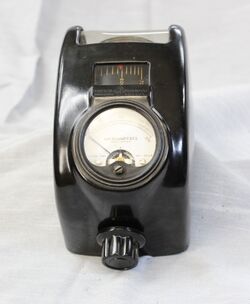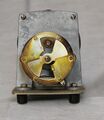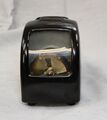1140-A: Difference between revisions
Jump to navigation
Jump to search
No edit summary |
No edit summary |
||
| Line 17: | Line 17: | ||
* [[Media:GRwiki Catalog N OCR 1954.pdf|N (1954)]], p.224 | * [[Media:GRwiki Catalog N OCR 1954.pdf|N (1954)]], p.224 | ||
}} | }} | ||
The '''General Radio 1140-A UHF Wavemeter''' introduced in | The '''General Radio 1140-A UHF Wavemeter''' was introduced in {{Catalog L}} and remained available through {{Catalog N}}. | ||
The 1140-A is a simple device to measure frequency in the UHF range of 240 to 1200 MHz with 2% accuracy. Behind the rear window is what's called a Butterfly circuit which varies capacitance and inductance simultaneously to attain resonance. Resonance is indicated with a microammeter. | The 1140-A is a simple device to measure frequency in the UHF range of 240 to 1200 MHz with 2% accuracy. Behind the rear window is what's called a Butterfly circuit which varies capacitance and inductance simultaneously to attain resonance. Resonance is indicated with a microammeter. | ||
Revision as of 19:15, 2 April 2024
The General Radio 1140-A UHF Wavemeter was introduced in Catalog L (1948) and remained available through Catalog N (1954).
The 1140-A is a simple device to measure frequency in the UHF range of 240 to 1200 MHz with 2% accuracy. Behind the rear window is what's called a Butterfly circuit which varies capacitance and inductance simultaneously to attain resonance. Resonance is indicated with a microammeter.
Specifications
- Frequency Range: 240-1200 MHz in one range
- Accuracy: ±2% of the indicated frequency
- Detector: A type 1N22 Crystal Detector (Microwave Diode)








